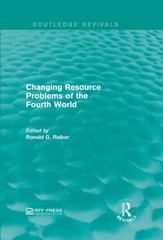Question
Q1 The April 4, 2022 edition of The New York Times included an article titled What to Know about the Bird Flu Outbreak (it is
Q1
The April 4, 2022 edition of The New York Times included an article titled "What to Know about the Bird Flu Outbreak" (it is not necessary for you to read the article; we will provide all relevant information in the questions we ask). This disease, bird flu or avian influenza, can be potentially disastrous for commercial chicken, turkey, and egg operations. According to U.S. Department of Agriculture, the 2022 outbreak was first observed in Dubois County, Indiana in early February 2022, and rapidly spread throughout multiple states. 22 million birds have already been euthanized as of early April 2022.
For Question 1, consider the market for commercially produced eggs prior to the current onset of the avian influenza. Assume that in December 2021 commercial egg markets were in a short-run equilibrium and the avian flu was neither present nor anticipated.
- Draw a graph that shows supply and demand for eggs prior to the current outbreak. This graph will serve as a starting point for your analysis in Questions 2 through 6.
- When drawing this graph, please assume that the demand curve is downward sloping and supply curve is upward sloping.
- Clearly show the market equilibrium in December 2021.
- Please remember to clearly label your axes, with P on the vertical axis and Q on the horizontal axis.
- Label the supply curve as S0; demand curve as D0; the equilibrium price as P0; and equilibrium quantity as Q0.
Q2
In February through April 2022, the avian influenza resulted in large scale euthanasia of poultry, with over 22 million chickens having been destroyed. Indeed, egg prices have risen by more than 52% in the last 2 months. Your task as an analyst is to analyze the changes in the market for eggs.
- Using your graph from Question 1, depict the changes that have taken place in the egg market. Clearly show any shifts in demand and/or supply curves. Label any curves that have shifted as D1and/or S1; and show the direction of the shift graphically with an arrow.
- Clearly show the new market equilibrium if it has changed from your answer to Question 1. Label the new equilibrium price as P1 and equilibrium quantity as Q1.
Q3
For Question 3, please refer to your graph in Question 2.
(a) Please explain any shifts in the demand and/or supply curves. If the demand and/or supply curve did not shift, please explain why.
(b) Explain what has happened to the equilibrium price and quantity as compared to the equilibrium from Question 1. Are your explanation/findings consistent with the findings from the New York Times article about the increase in egg prices of more than 52% over the past two months?
Q4
Recently, it has become apparent that many consumers are increasingly reluctant to buy eggs due to the (mistaken) belief that the eggs could be contaminated with the avian influenza and pose a health risk to humans. Removing this group of consumers from the egg market will cause another disturbance. Your task as an analyst is to analyze the resulting changes in the market for eggs.
- Using your graph from Question 2, depict the impact of an exit by a significant number of consumers from the market for eggs. Clearly show any shifts in demand and/or supply curves that came about because of this exit. Label any shifted curves as D2and/or S2.
- Clearly show the new market equilibrium. Label the new equilibrium price as P2 and equilibrium quantity transacted as Q2.
Q5
For Question 5, please refer to your graph in Question 4.
(a) Please explain any shifts in the demand and/or supply curves. If the demand and/or supply curve did not shift, please explain why.
(b) Explain what has happened to the equilibrium price and quantity as compared to the equilibrium from Questions 2 and 3.
Q6
In Question 1, you established the original equilibrium in the egg market and determined the equilibrium price (P0) and equilibrium quantity (Q0). In Question 2 through 5, you applied two additional changes, and found the final equilibrium price (P2) and the equilibrium quantity (Q2).
- Considering your analysis, can you state with certainty that Q2 is greater than, same as, or less than Q0? Why or why not?
- Similarly, can you state with certainty that P2 is greater than, same as, or less than P0? Why or why not?
If any of your predictions about the cumulative impact of these shifts on either price or quantity (or both) are uncertain (ambiguous), what will determine the final outcome? Please make sure you relate your explanation to the graphical analysis you've offered in Questions 2 through 5.
You may want to illustrate your response with a graph. However, a graph is not required.
Step by Step Solution
There are 3 Steps involved in it
Step: 1

Get Instant Access to Expert-Tailored Solutions
See step-by-step solutions with expert insights and AI powered tools for academic success
Step: 2

Step: 3

Ace Your Homework with AI
Get the answers you need in no time with our AI-driven, step-by-step assistance
Get Started


